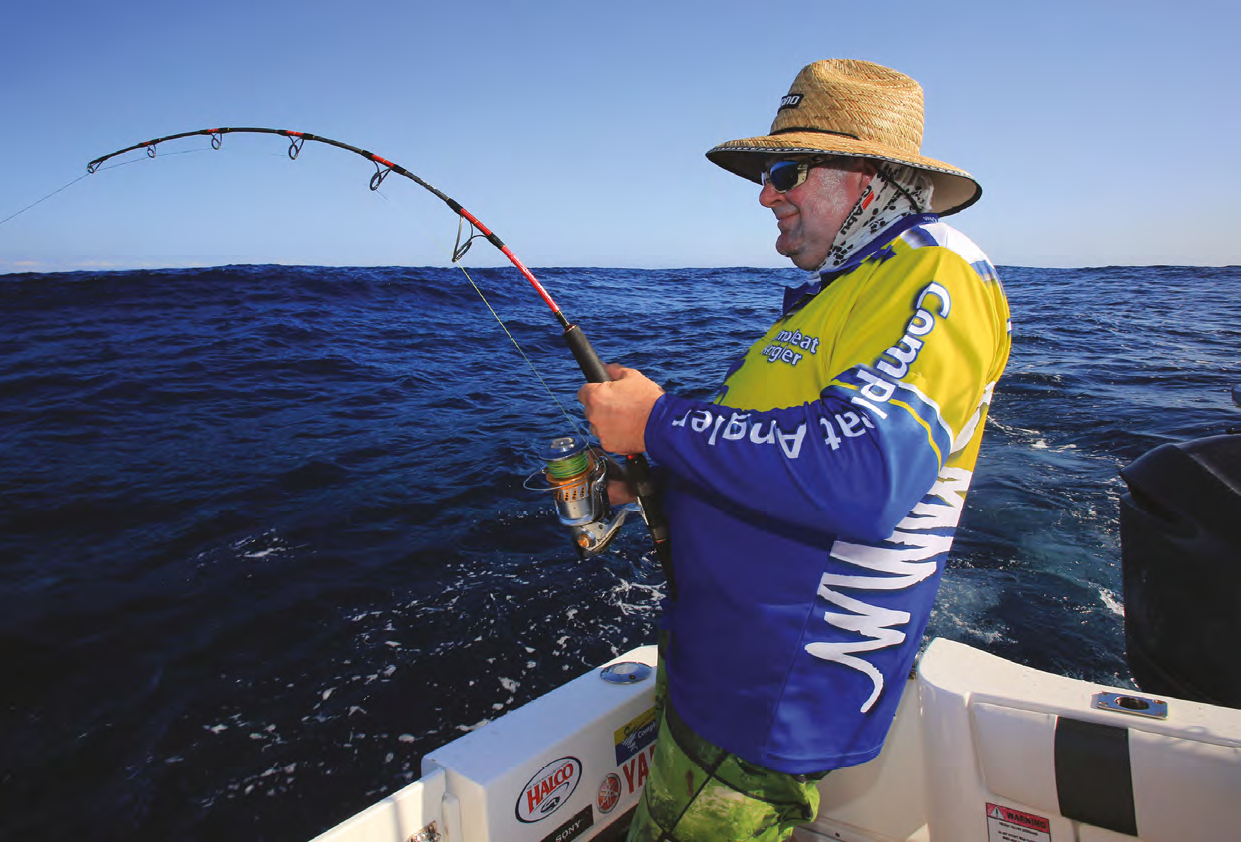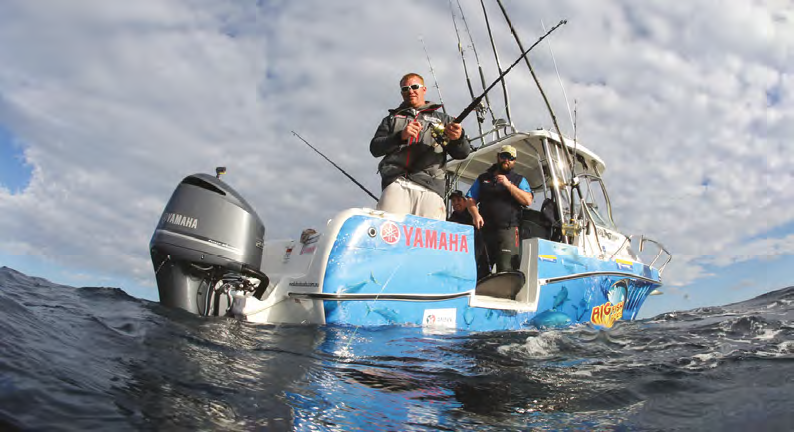
There is something very special about hooking a huge fish. All anglers dream about catching big fish. It’s that analogy of the ‘old man and the sea’ doing battle with big and potentially dangerous fish.
Spending more time on the water than on the land I have encountered my fair share of sea monsters from record sized tuna, massive marlin, huge sharks as well as a number of unstoppable creatures that I never even had a chance to land. I have been spooled losing 1000 metres of line in one run, had rods break, reels explode and seen anglers crumble under the pressure, no other sport has such passion and pain as big game fishing.
The best news is Australia has so many of the hotspots that are easily accessible to chase big fish. Once a rich man’s sport dominated by big boats, today, thanks to dramatic improvements in trailer boats and four stroke outboards, it is now possible to catch huge fish from surprisingly small boats.
A 6m trailer boat, like my Evolution, set up correctly and with a good skipper at the helm, can now travel as much as 100 kilometres offshore in the right conditions, which effectively opens the doors to just about any fish that swims. However, you don’t necessarily need to travel far from land; in fact, there are many spots you can catch the likes of marlin right in close to shore, meaning everyone can get in on the act.
FINDING GAME FISH
Game fish can be found right around the country but it is along the east and west coasts where the continental shelf comes in close to shore that are the true hotspots. The current, especially the East Australian Current, spills over into the shallows bringing with it all sorts of big fish, but at this time of year it is especially the marlin.
Water temperatures play a vital role and every species has its preferred temperature. Billfish like water above 20°C. However, if there is one hint I can offer: it’s clean water. Nearly all game fish species we are talking about here are sight hunters, and while they certainly can be found in dirty green water at times they all prefer clean and often blue water.
Most of these species may be pelagic in nature but that doesn’t mean they don’t like to concentrate around structure, be it reefs, canyons or pinnacles. This is not for cover, it is because their food sources stack up in these locations. The development of high-tech electronics like fish finders and GPS plotters has made finding these all-important bait schools easier. Find the bait and you will find the big boys.
FISHING TECHNIQUES
The best way to catch most game fish is to troll. The ocean is a massive expanse which can make it difficult to locate big fish – so the more ‘ground’ you cover the better. A mix of skirted lures and deep divers like Laser Pros, trolled at 6-9 knots, allow you to cover the ground searching for fish.
Lures are great but there are times when going natural pays dividends. Dead baits, known as skip baits, can be trolled at 3 to 5 knots with the reel just in gear. When a fish bites it is allowed to swallow the bait before the angler strikes. Employing circle hooks offers a better hook-up rate and most importantly is better for the fish as release is standard practice these days.
Next up is live baiting, which not surprisingly works for absolutely everything and the only place to live bait is around the bait schools. Find the bait and you will find the fish; a bait school is like an underwater version of a takeaway shop.
While bait will occasionally show itself on the surface the most consistent technique is to employ a fish finder. Like your eyes underwater a quality sounder will show you exactly what is going on underneath. Once you find the bait you can either slow troll around them or drift with the school. Drifting not only allows you to hang with the bait, but it also allows your baits to act naturally and swim deeper in the strike zone.
One trick that works a treat when you are drifting over the bait is to drop a bait jig down into the school and then crank it back up once you load up with baits. Winding a full string of struggling baitfish up to the surface is like ringing the dinner gong and believe me the game fish come running.
BATTLING GAMEFISH
Fighting big fish is all about technique as well as a bit of brute force. Some species, such as marlin and mahi, spend as much time in the air as they do in the water, which is about as exciting as it gets. Alternatively, at the other end of the spectrum, tuna do anything but jump and stay down deep slugging it out. The only way to be beat them is by sheer stamina and some serious pain. Remember, fights can go for hours and hours so don’t say I haven’t warned you.
Most fish are lost during the final stages of the fight. Not only are the angler and crew fatigued but worse still most anglers are scared of the fish. This may sound silly but when a fish that could be potentially more than 10-feet long pops up boat-side grabbing it can be daunting. The trick is to keep calm and make sure everyone knows their role. Communication between the captain and angler is essential during this stage of the fight – a simple misunderstanding can quickly cost the fish, or worse still cause an accident.

Danger is a very real issue and fishermen have been pulled over, lost limbs, received lacerations and even in some cases been killed. Following one mistake I lost the tip of my thumb in a split second while fighting a big tuna. Then there is the fish themselves with a set of razor blades bites are another issue. Sharks will happily show off their dentures while others such as the wahoo have razor blades for teeth that will cut you to the bone in an instant.

Well, hopefully, the potential dangers haven’t scared you off - so if you are game it’s time to take on some of the biggest fish in the sea. Tuna, marlin and sharks are the true heavyweights, while mahi, wahoo and kings are a bit more manageable. It doesn’t matter which big species you target, you just have to be game to take them on!
Category: Lifestyle
Written: Mon 01 Feb 2016
Printed: February, 2016
Published By:
AL MCGLASHAN